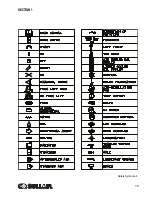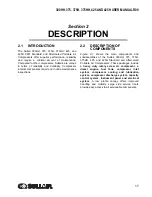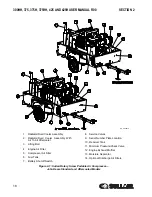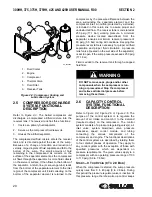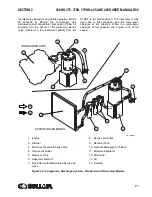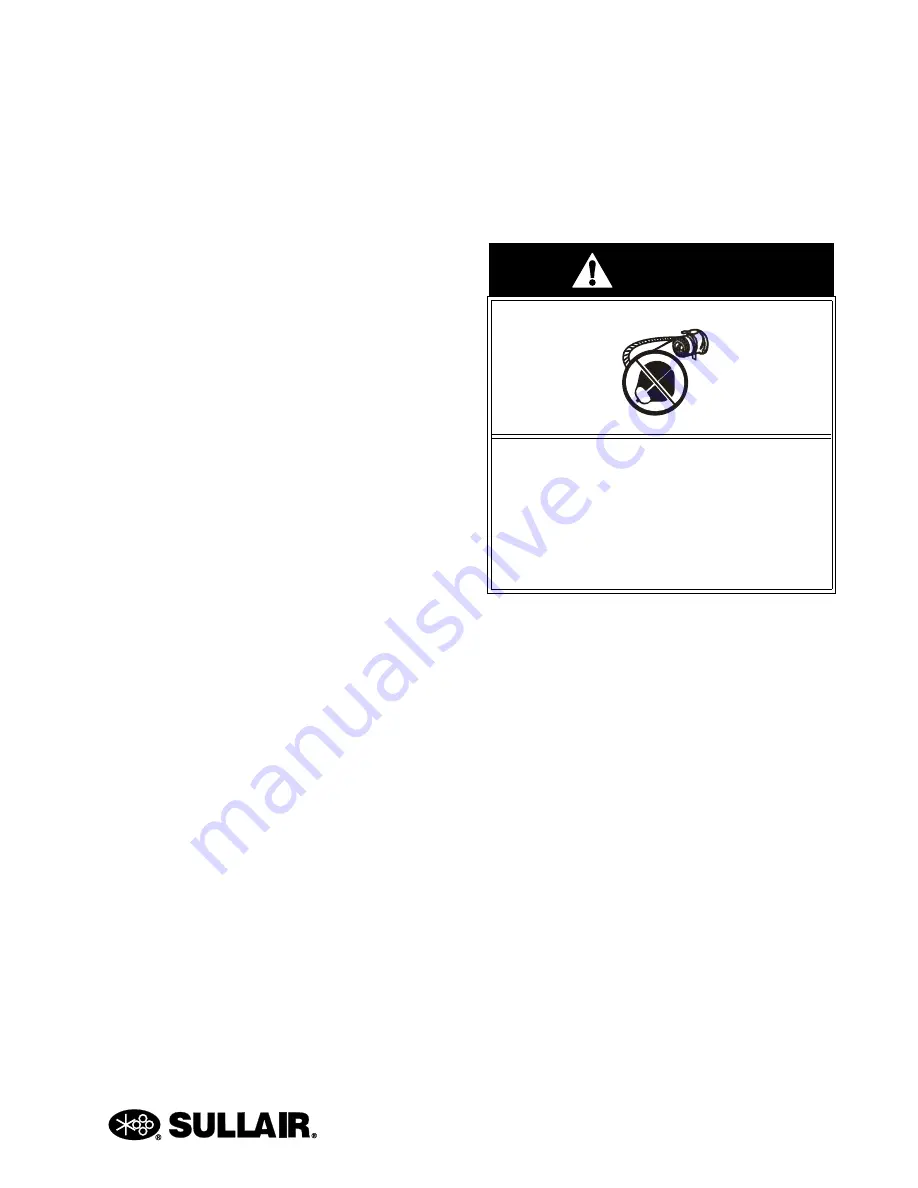
SECTION 1
9
F.
Shut off engine before adding fuel, fluid, coolant
lubricants, air line antifreeze compound or bat-
tery electrolyte, or before replacing ether starting
aid cylinders.
G.
Disconnect the grounded negative battery con-
nection to prevent accidental engine operation
prior to attempting repairs or adjustments. Tag
the battery connection so others will not unex-
pectedly reconnect it.
H.
When adjusting the controls, it may require oper-
ation of the equipment during adjustment.
DO
NOT
come in contact with any moving parts
while adjusting the control regulator and setting
the engine RPM. Make all other adjustments with
the engine shut off. When necessary, make
adjustment, other than setting control regulator
and engine RPM, with the engine shut off. If nec-
essary, start the engine and check adjustment. If
adjustment is incorrect, shut engine off, readjust,
then restart the engine to recheck adjustment.
I.
Keep hands, feet, floors, controls and walking
surfaces clean and free of fluid, water, antifreeze
or other liquids to minimize possibility of slips and
falls.
1.6
HOT SURFACES, SHARP
EDGES AND SHARP
CORNERS
A.
Avoid bodily contact with hot fluid, hot coolant,
hot surfaces and sharp edges and corners.
B.
Keep all parts of the body away from all points of
air discharge and away from hot exhaust gases.
C.
Wear personal protective equipment including
gloves and head covering when working in, on or
around the compressor.
D.
Keep a first aid kit handy. Seek medical assis-
tance promptly in case of injury.
DO NOT
ignore
small cuts and burns as they may lead to infec-
tion.
1.7
TOXIC AND IRRITATING
SUBSTANCES
A. DO NOT
use air from this compressor for respi-
ration (breathing) except in full compliance with
OSHA Standards 29 CFR 1920 and any other
Federal, State or Local codes or regulations.
B. DO NOT
use air line anti-icer systems in air lines
supplying respirators or other breathing air utili-
zation equipment and
DO NOT
discharge air
from these systems into unventilated or other
confined areas.
C.
Operate the compressor only in open or well-
ventilated areas.
D.
If the compressor is operated indoors, discharge
engine exhaust fumes outdoors.
E.
Locate the compressor so that exhaust fumes
are not apt to be carried towards personnel, air
intakes servicing personnel areas or towards the
air intake of any portable or stationary compres-
sor.
F.
Fuels, fluids, coolants, lubricants and battery
electrolyte used in the compressor are typical of
the industry. Care should be taken to avoid acci-
dental ingestions and/or skin contact. In the
event of ingestion, seek medical treatment
promptly.
DO NOT
induce vomiting if fuel is
ingested. Wash with soap and water in the event
of skin contact.
G.
Wear an acid-resistant apron and a face shield or
goggles when servicing the battery. If electrolyte
DANGER
INHALATION HAZARD!
Death or serious injury can result from
inhaling compressed air without using
proper safety equipment. See OSHA stan-
dards and/or any applicable Federal, State,
and Local codes, standards and regulations
on safety equipment.
Summary of Contents for 300HH
Page 17: ...SECTION 1 15 Safety Symbols 2 ...
Page 18: ...SECTION 1 16 Safety Symbols 3 ...
Page 49: ...SECTION 2 300HH 375 375H 375HH 425 AND 425H USER MANUAL R00 47 2 9 WIRING DIAGRAM ...
Page 60: ...NOTES 58 ...
Page 79: ...NOTES ...

















